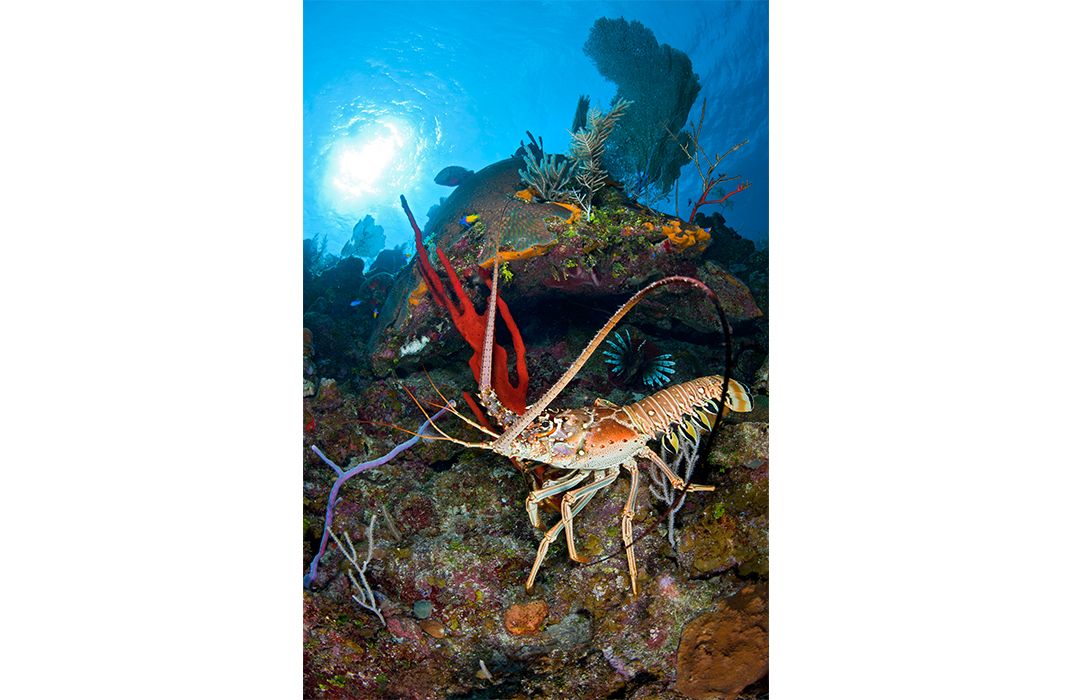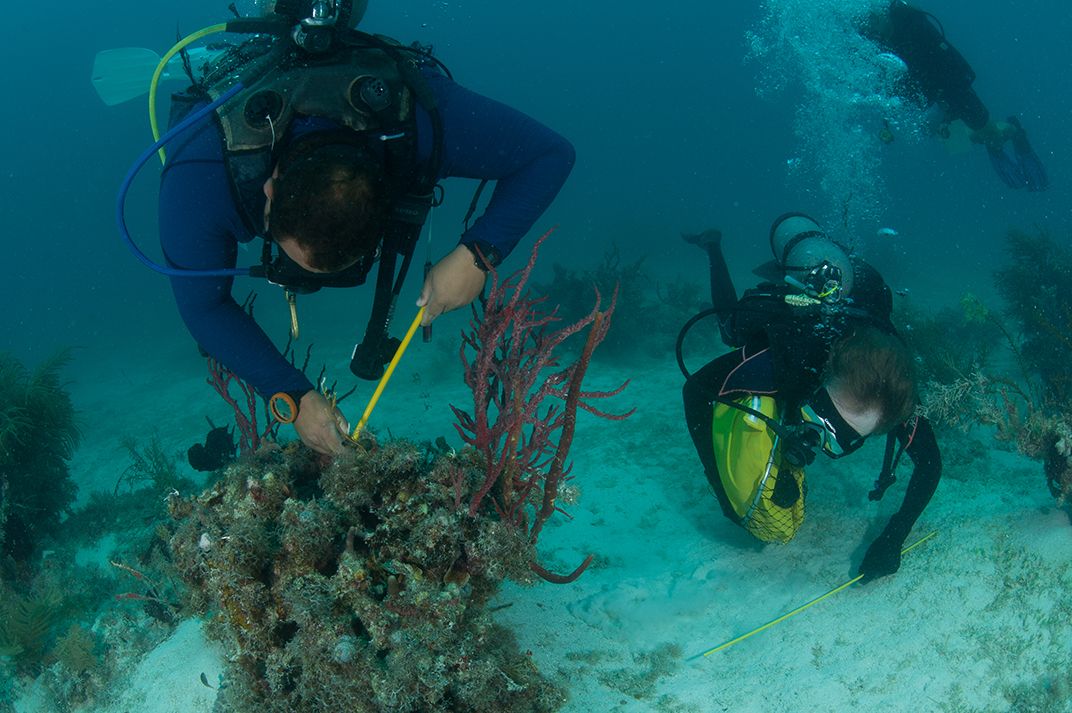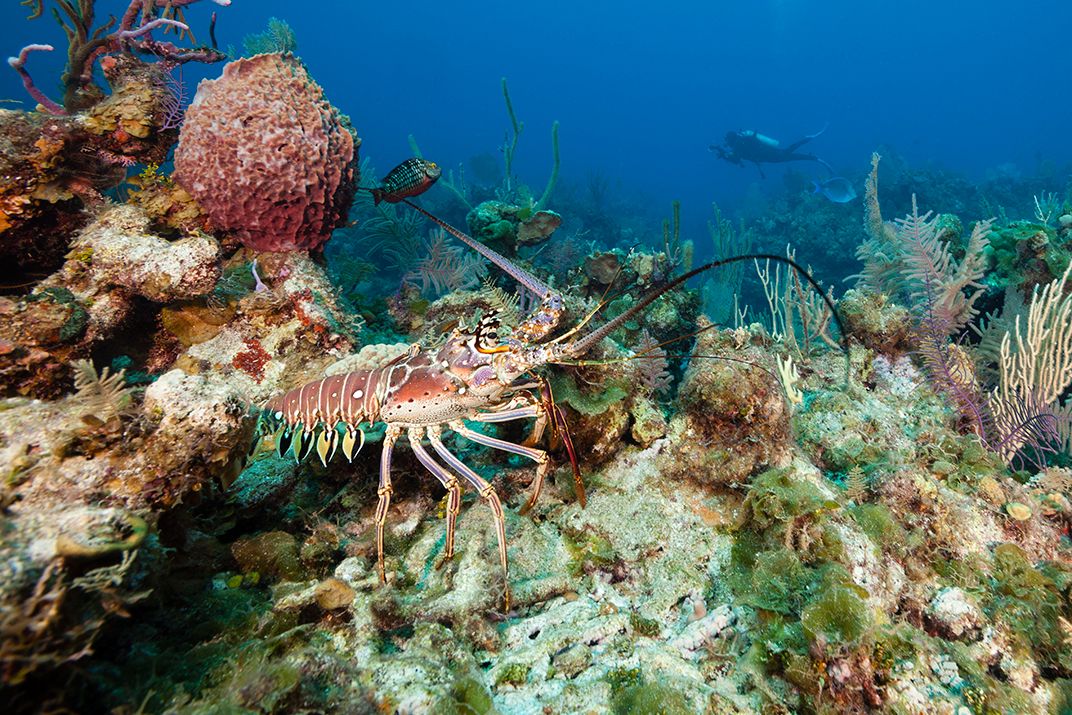To Make Lobster Fisheries More Sustainable, Scientists Attempt to Decode Crustacean DNA
As the battle escalates to combat illegal fishing, Smithsonian scientists offer up a possible genetic tool
/https://tf-cmsv2-smithsonianmag-media.s3.amazonaws.com/filer/8a/1f/8a1fce08-9794-4b65-8e2b-bc76250da299/4259999809web.jpg)
Bathed in butter or lightly spritzed with fresh lemon juice, lobster is the king of seafood—a royal crustacean with an untraceable lineage whose journey from seafloor to table can be fraught with political and ecological uncertainty. With consumer demand for responsibly harvested seafood rising, companies such as Red Lobster, Chicken of the Sea and Seattle Fish Co. have pledged to do a better job of tracing the source of the lobster they import. Following through with their promise, however, remains difficult because there’s no effective way to identify where a lobster was caught once it hits the docks. That’s why Stephen Box and Nathan Truelove, researchers from Smithsonian Marine Station in Fort Pierce, Florida, are searching the lobster’s genetic code for a better traceability tool.
Most of the lobster tails consumed in the United States come from the Caribbean, where exactly is nearly impossible to say with current technology. But that information is critically important because illegal, unregulated and unreported lobster fishing costs some countries millions of dollars in lost revenue annually. It also reduces the number of lobsters in marine sanctuaries intended as safe habitats where animals can breed and grow without fishing pressure.
If, however, a lobster’s home territory is written into its genetic code as Box and Truelove suspect, it just may be possible to distinguish a legally captured lobster from one with a shady background—maybe even after it’s made it to the dinner plate.
Economically, Caribbean lobster, also known as spiny lobster, is among the largest and most important fishery in the Caribbean. The U.S. is the largest consumer of that resource. According to Jimmy Andino, a researcher and lobster fisheries specialist at the Center for Marine Studies in Honduras, his country alone exports $40 million worth of lobster to the U.S. market. He says intensive lobster fishing throughout the Caribbean is causing a steady decline in both the number and size of lobster available to satisfy that market. The incentive to fish outside legal boundaries is strong.
Lobsters spend their first few months of life as tiny swimming larvae that can be carried far and wide by currents. As a result, their genes have been homogenized throughout the Caribbean. “There’s very little genetic differentiation amongst lobsters in the Caribbean,” says Box. “But what we suspect, is that once a lobster settles into an area, it’s environment starts shaping how it will function in that specific location. We are all influenced by our environment, and we start expressing genes to respond to environmental conditions.”
In Himalayan rabbits, for example, warm conditions turn off genes that tell the animal’s cells to produce melanin. With no melanin, the rabbit’s fur turns white. Under cold conditions melanin genes turn on and the fur turns black. In the case of lobster, environmental factors such as salinity, water depth and turbidity may cause certain changes in the animal’s genetic code that turn specific genes on or off.
This summer, Box and Truelove will be gathering tissue samples from lobsters in five geographically distinct areas of the Caribbean to see if they can find specific bits of DNA that are expressed in predictable ways based on their location. The scientists don’t even need to know what those genes do, just whether or not they’re turned on or off.
“If we can identify that, we can say ‘if you’re expressing that set of genes, or that specific signature of genes, you must be living in this area,’” Box says, “because you wouldn’t be expressing them if you lived in a different area.”

Such a tool would be a huge improvement over current tracking methods which rely on resource-intensive patrol boats, self-reporting by fishers when they off-load their catch and GPS installed on fishing vessels, which tells where a boat has been but not where a lobster has been caught.
Searching for environmentally sensitive DNA in any organism is a relatively new field, and applying these concepts to fisheries management is uncharted territory. “If it can be done, it’s going to be very, very useful,” says Nancy Daves from NOAA Fisheries Office of International Affairs. “We know that there is a significant amount [of poaching and illegal fishing] in the Caribbean, where it’s like a basin with countries all around it. They’re all stealing from each other.”
In Jamaica, for instance, the government reports that poachers robbed $130 million in lobster from that country’s waters between 2006 and 2011. “They actually build in a factor of 10 percent in their management plan to allot for illegal take,” says Daves. “They acknowledge this as a fact of life in the Caribbean.”
It is a fact of life that the U.S. plays a hand in, and could conceivably change if traceability improves and importers and distributors refuse to purchase lobster from illegal, unregulated and unreported (IUU) sources. The lobster pledge some have already signed is intended to stem the import of lobster caught using dangerous scuba diving methods that have been outlawed in most Caribbean countries. Despite the laws, some fishers are still using scuba, and as more and more lobsters are taken out of the sea, they are diving ever deeper to find them.

Box says that every year, along the impoverished Miskito coast of Honduras and Nicaragua, decompression sickness from diving too deep and staying too long kills roughly 20 divers every year and cripples many more. A genetic tool that identifies the depth of a lobster’s range would help signatories to the lobster pledge follow through on their promise. Similarly, finding a genetic signature that identifies the geographic region a lobster comes from will help curtail poaching across international borders. “Lobster is not part of the Honduran diet,” Andino says, “but it’s part of our industry for exportation. The genetic work will help us to be sure that the lobster that is caught in Honduras belongs to Honduras. That it’s not going to illegal and unreported fishing.”
According to Box, as important as their economic impact is, poachers can also make it difficult to gauge the ecological sustainability of the fishery they poach from as well as the one they claim to fish. “If you’re trying to manage a fishery for a specific area,” says Box, “you really want to know how much production is coming out of that area. If you’re actually stealing it from somewhere else, it can be very difficult to know how many lobster you really have.”

The genetic method Box and Truelove are exploring would help natural resource managers get a better handle on their lobster populations, and they’re working with Andino to collect samples of lobster throughout Honduran waters in hopes of better understanding the country’s lobster stock.
The technology they are developing may also be applicable to other fisheries. “I think it is theoretically something that can and will be used,” says John Henderschedt, Director of NOAA’s Seafood Inspection Program. “What is less clear, at least in the near term, is the extent to which it can be used in various fisheries.” Genetic testing technology is expensive compared to some other methods. In addition, some environmental conditions change from year to year, so the genetic signature for a given region may need to be identified on an annual basis. Henderschedt says it’s not likely to be worth the cost in every circumstance, but it could be very valuable if used in areas where IUU fishing poses the greatest risk for environmental or economic losses.
/https://tf-cmsv2-smithsonianmag-media.s3.amazonaws.com/filer/bb/e8/bbe824e0-17b9-4dee-a684-a274cbb1d972/gws3444web.jpg)
According to Truelove, those are questions to be addressed down the road. Right now, he and Box are focused on step one. “There have been no genetic studies on this species,” he says. “We’re basically building this up from scratch.” Even the techniques for gathering DNA in the field are new. Using liquid nitrogen to preserve very high quality DNA, Box says they’ll have to “baby” tissue samples from throughout the Caribbean all the way back to their lab in Florida.
To find what they’re looking for, they need to sequence as much of the genetic code as they can. Once they identify genes that respond to environmental conditions specific to each region, they won’t need such careful collecting methods. At that point, the scientists should be able to locate those genetic markers in meat from lobster at the fish market or even in samples taken from lobster that is frozen and packaged for export to the U.S.
Truelove won’t take a guess yet as to how much detail they will glean from this work. “One of the big unknowns we want to try to figure out with this technique is; how much can we really zoom in? Will we be able to distinguish Honduran lobster from Nicaraguan lobster, or can we continue zooming until we can distinguish lobsters caught using casitas (shallow water shelters built to attract lobster) from those caught off shore in deeper water that would identify them as being caught using scuba at dangerous depths?”
According to Box, that would be the epitome of success, as good as a lobster delivered to the dock with a return address label glued to its forehead.